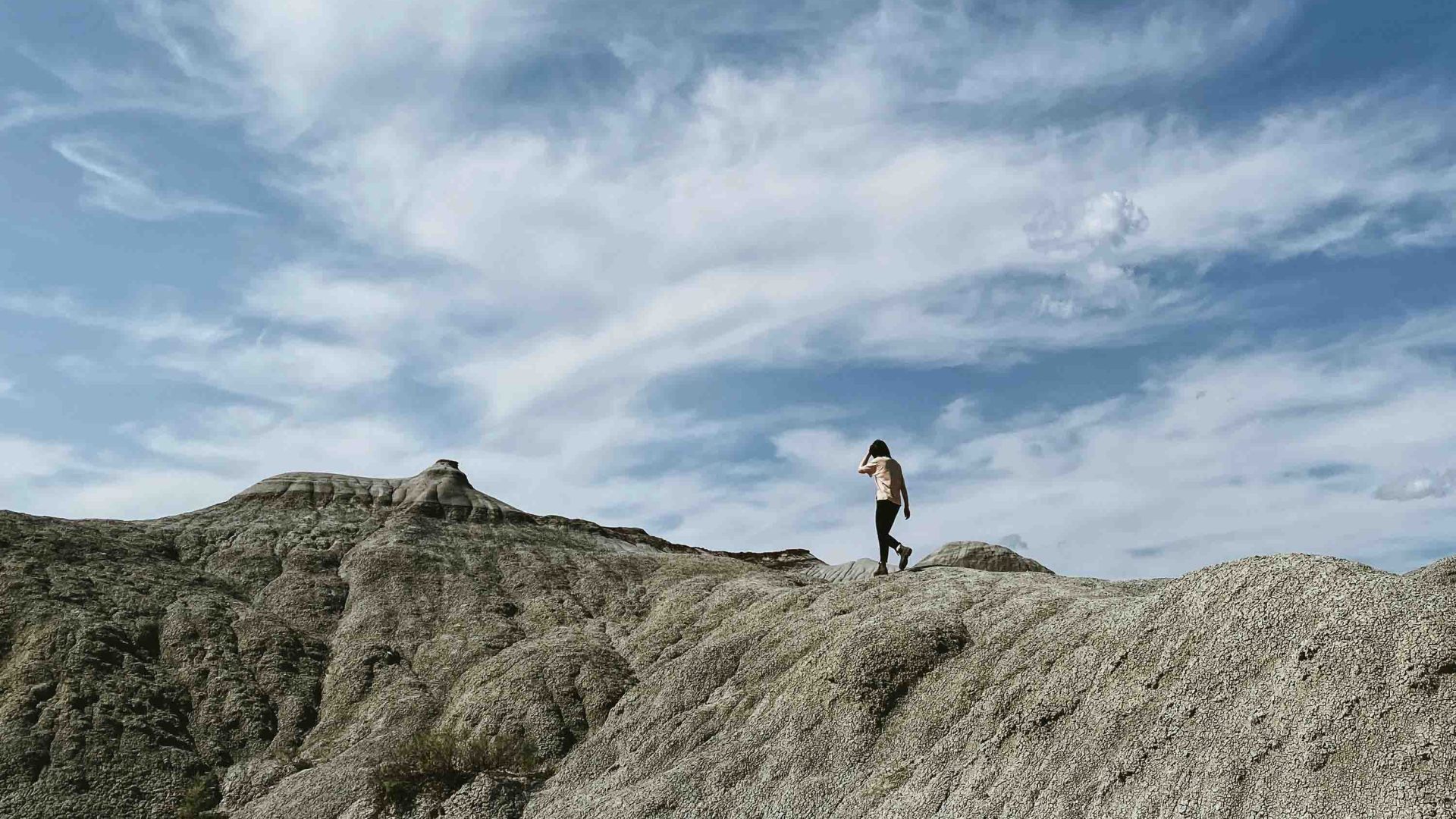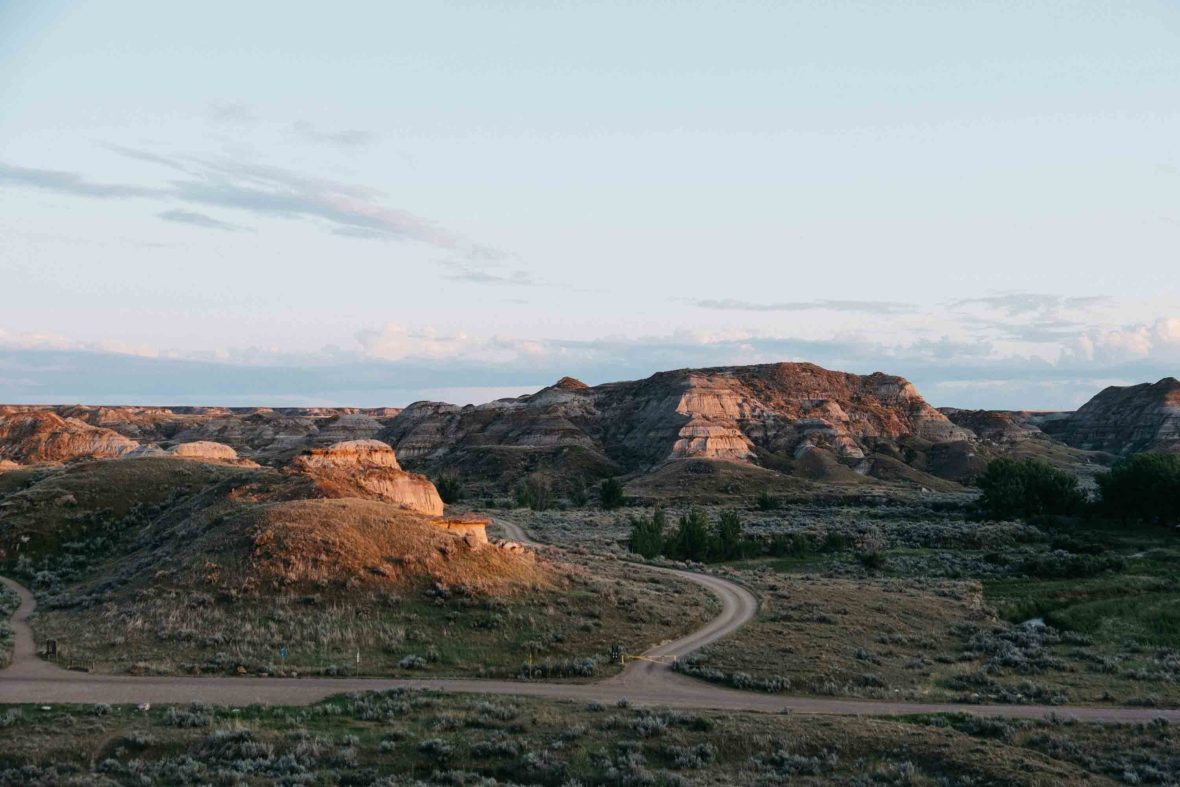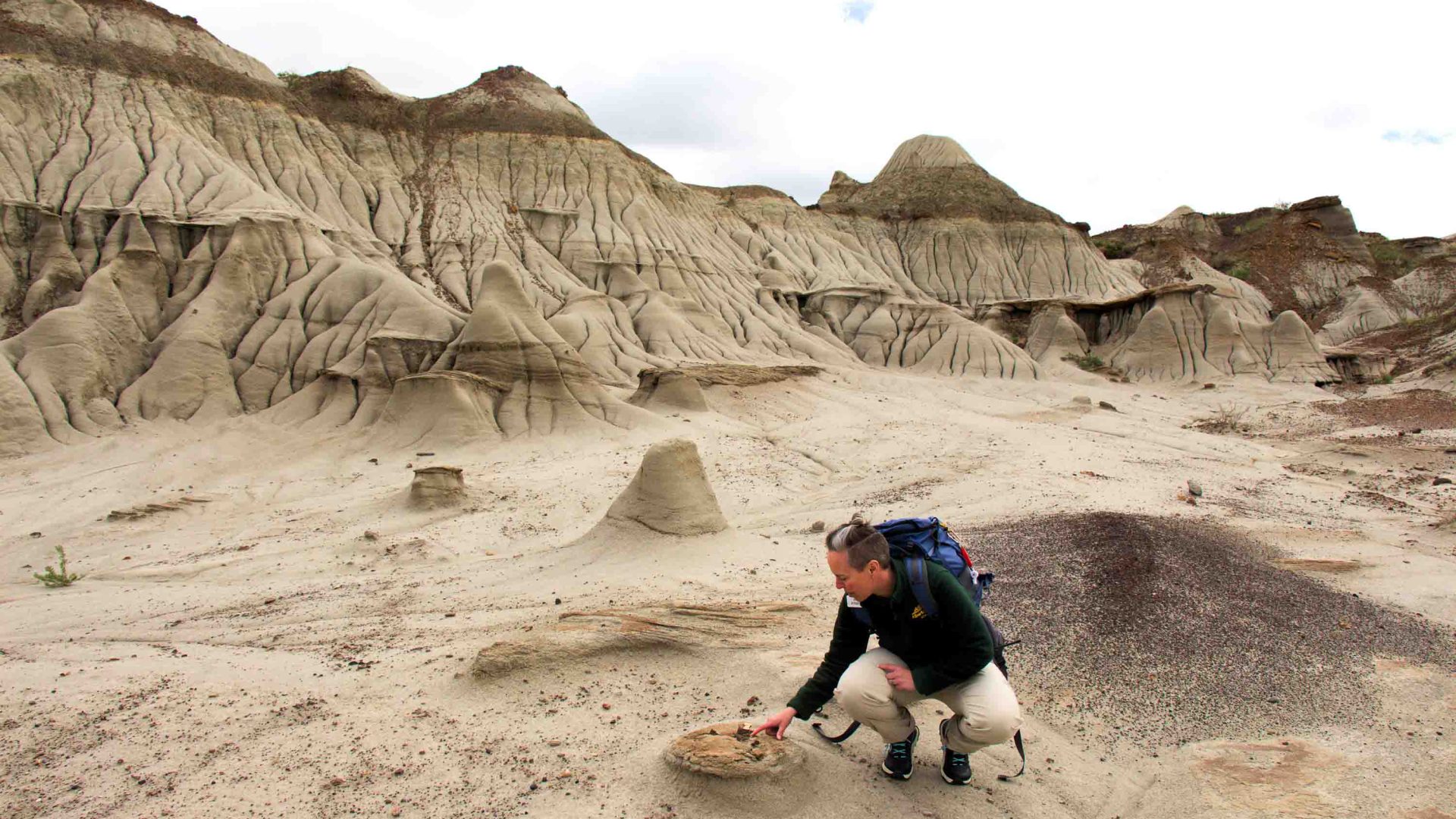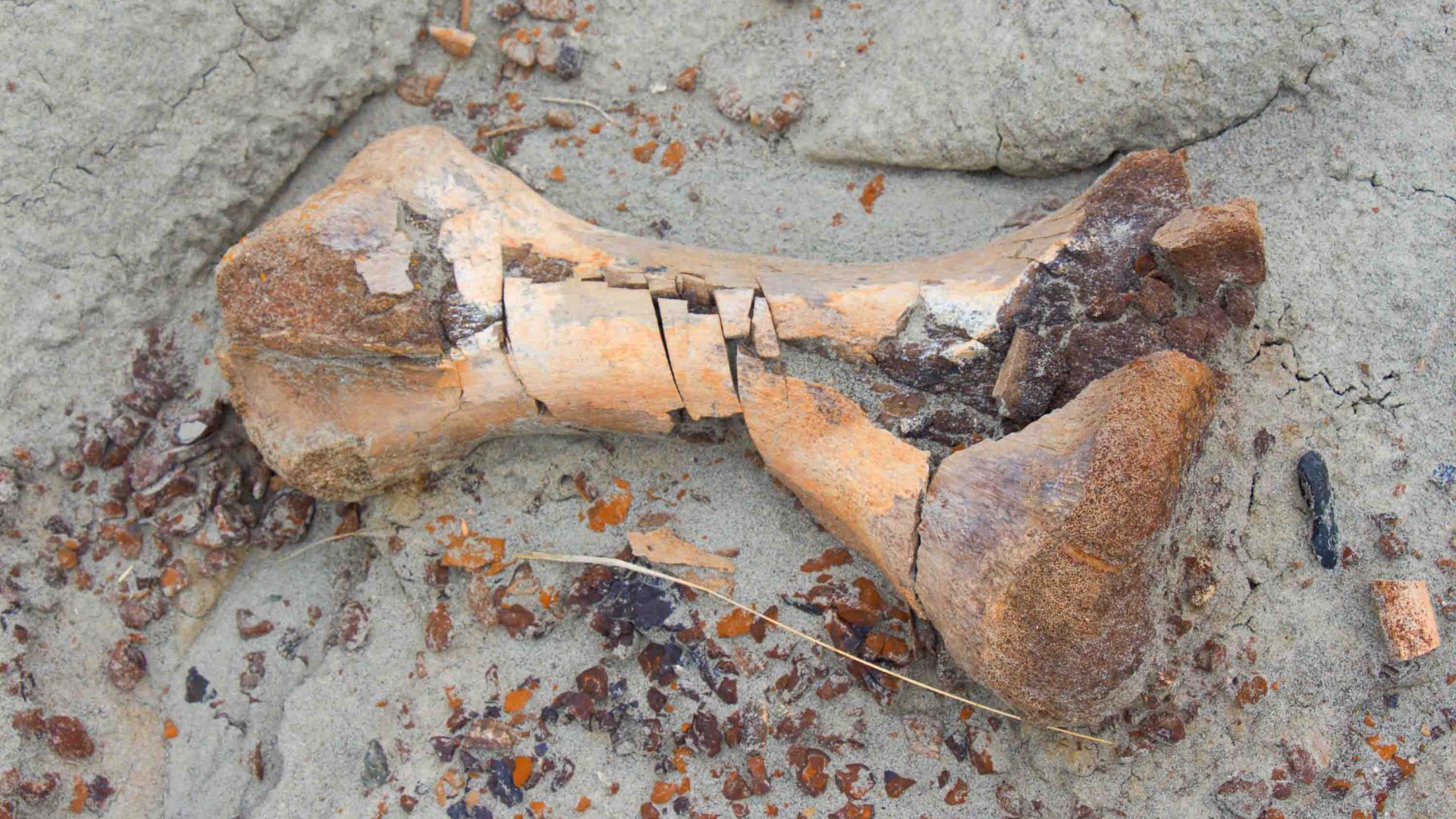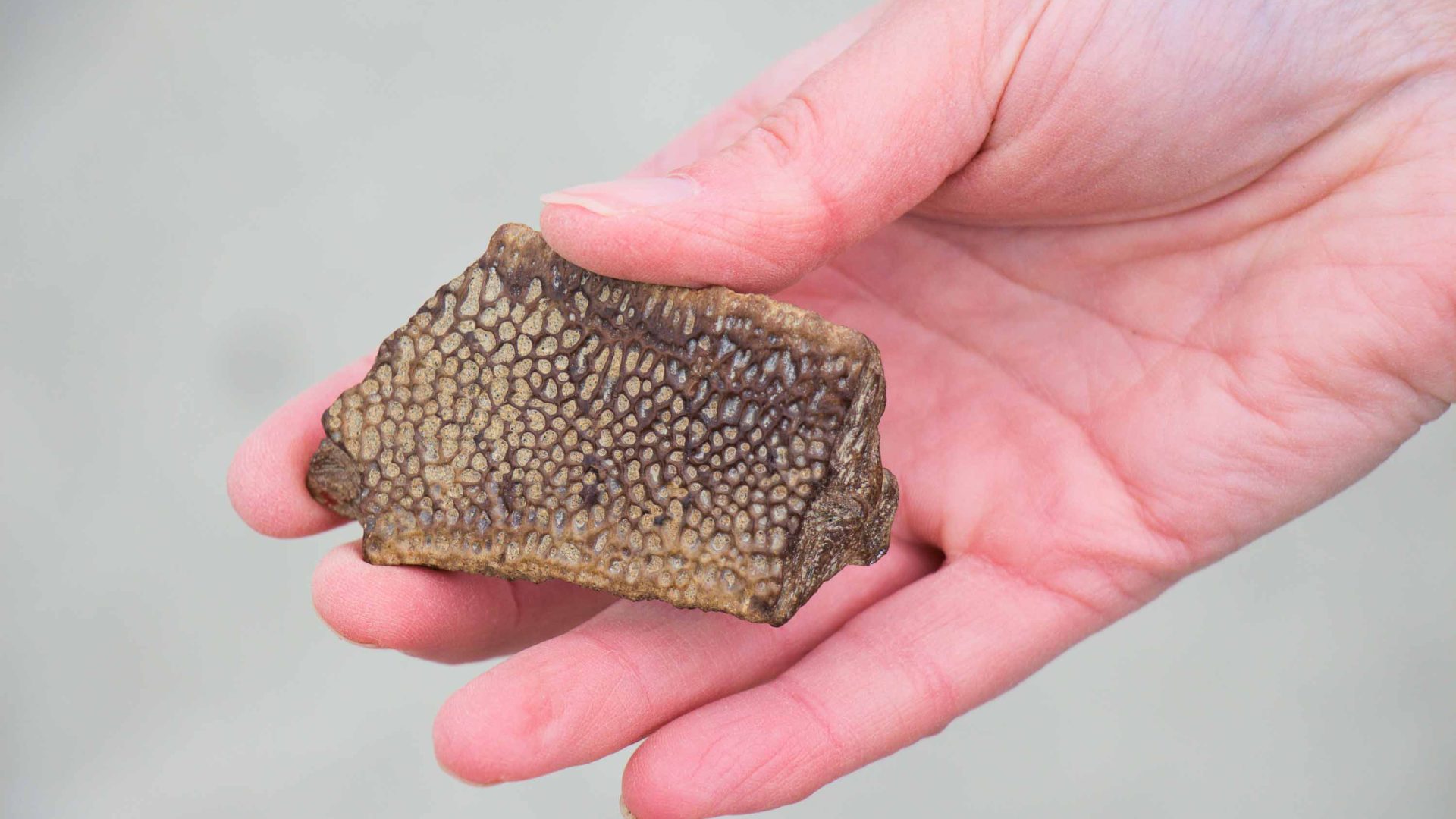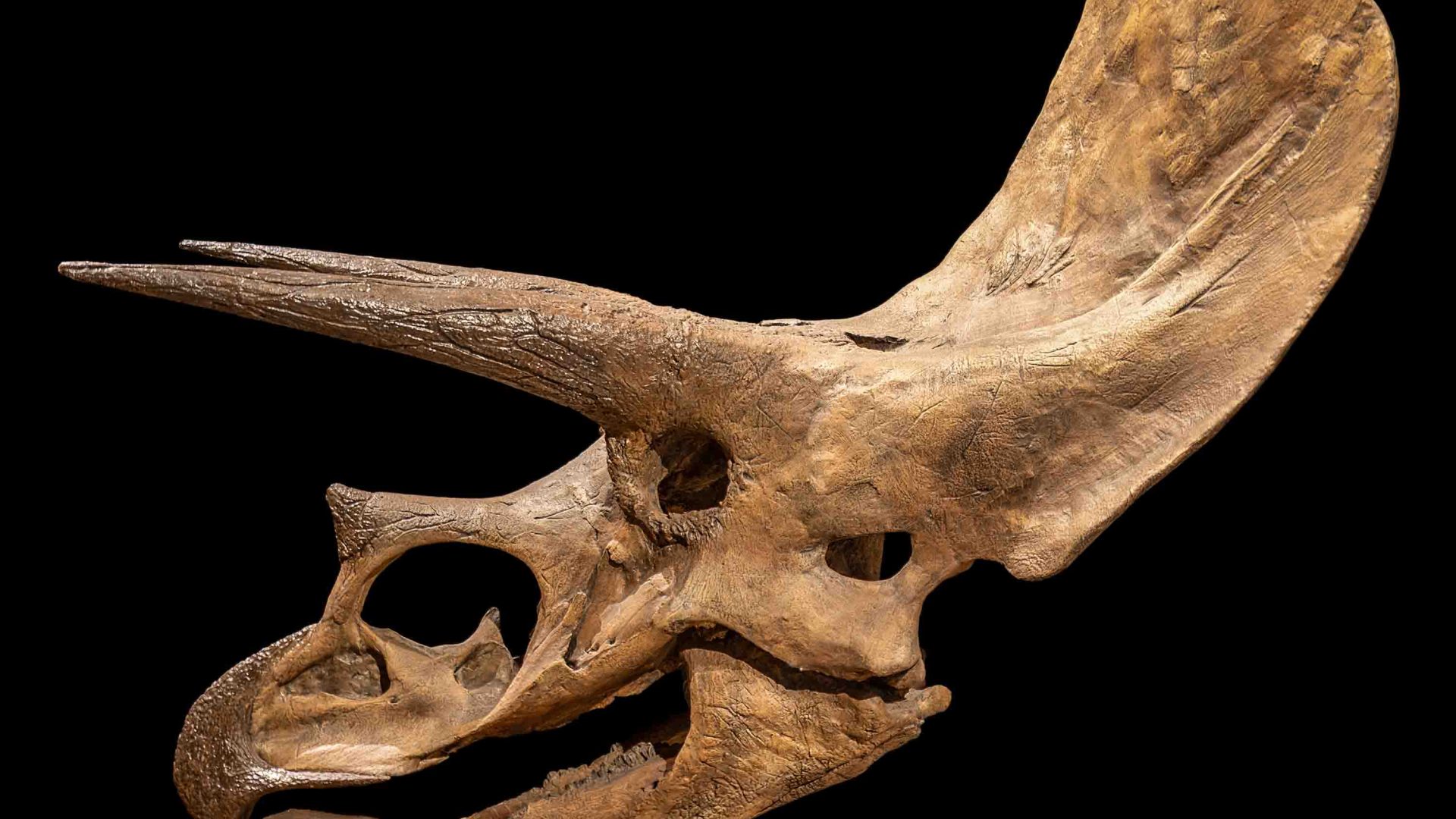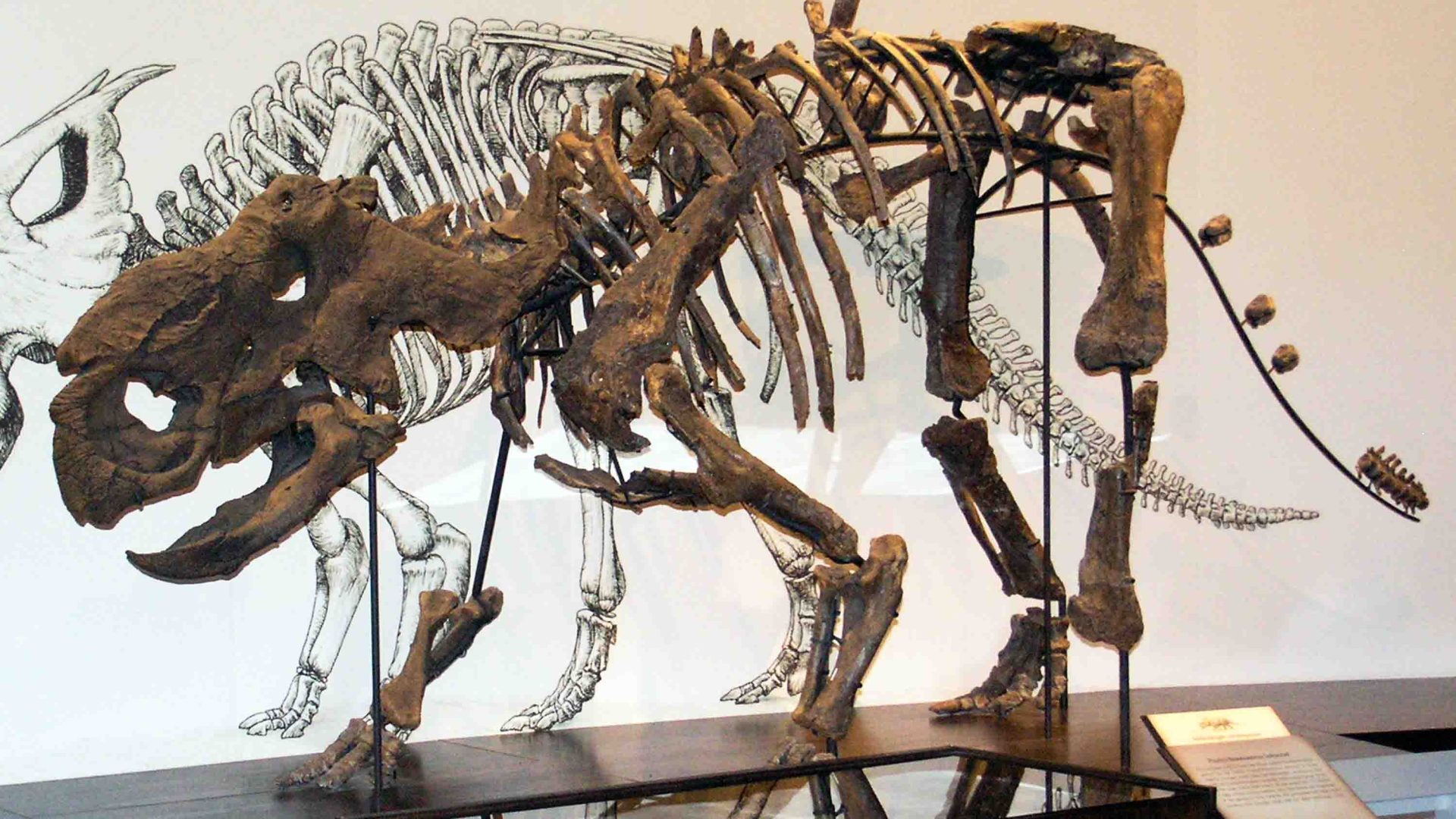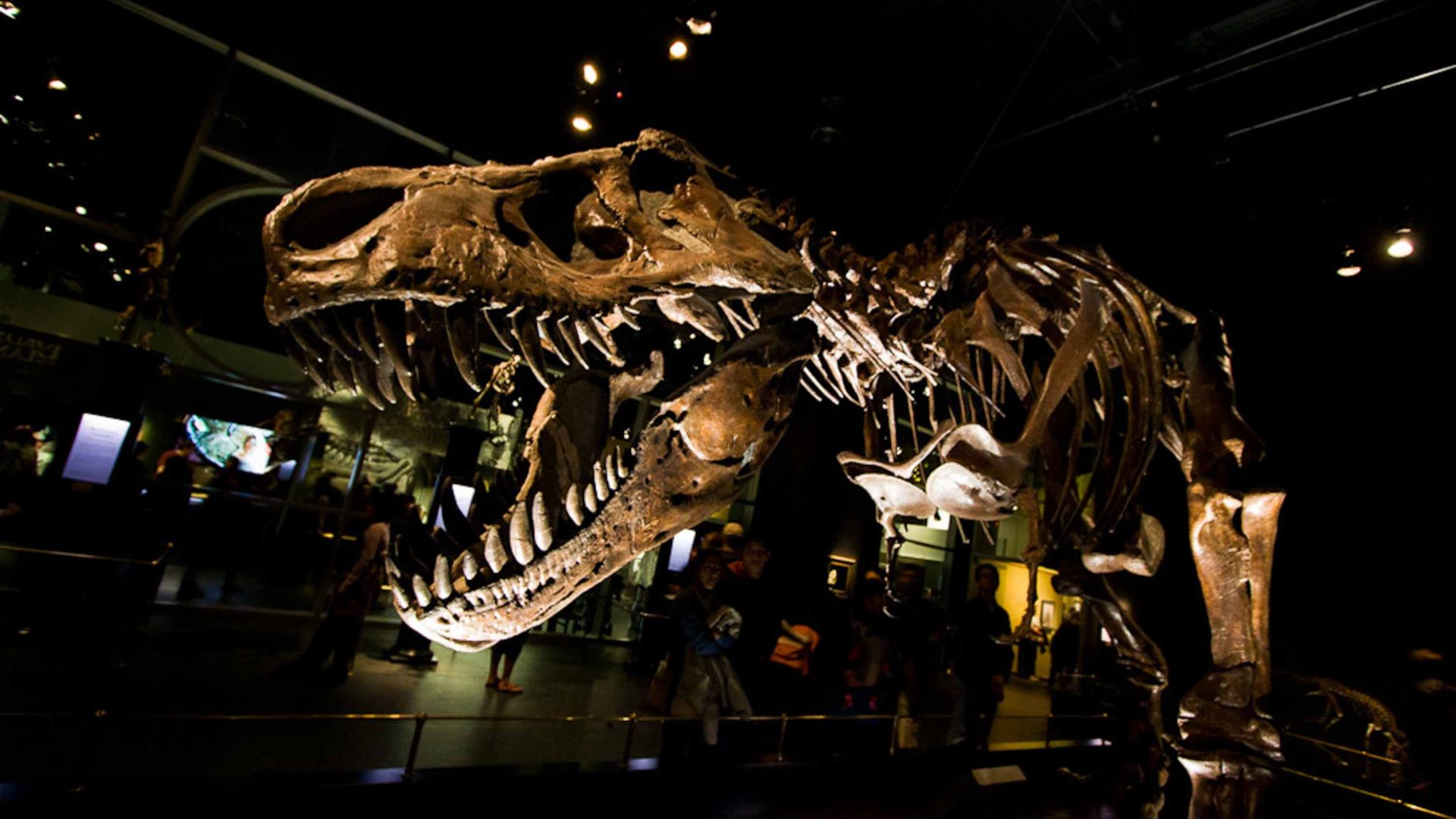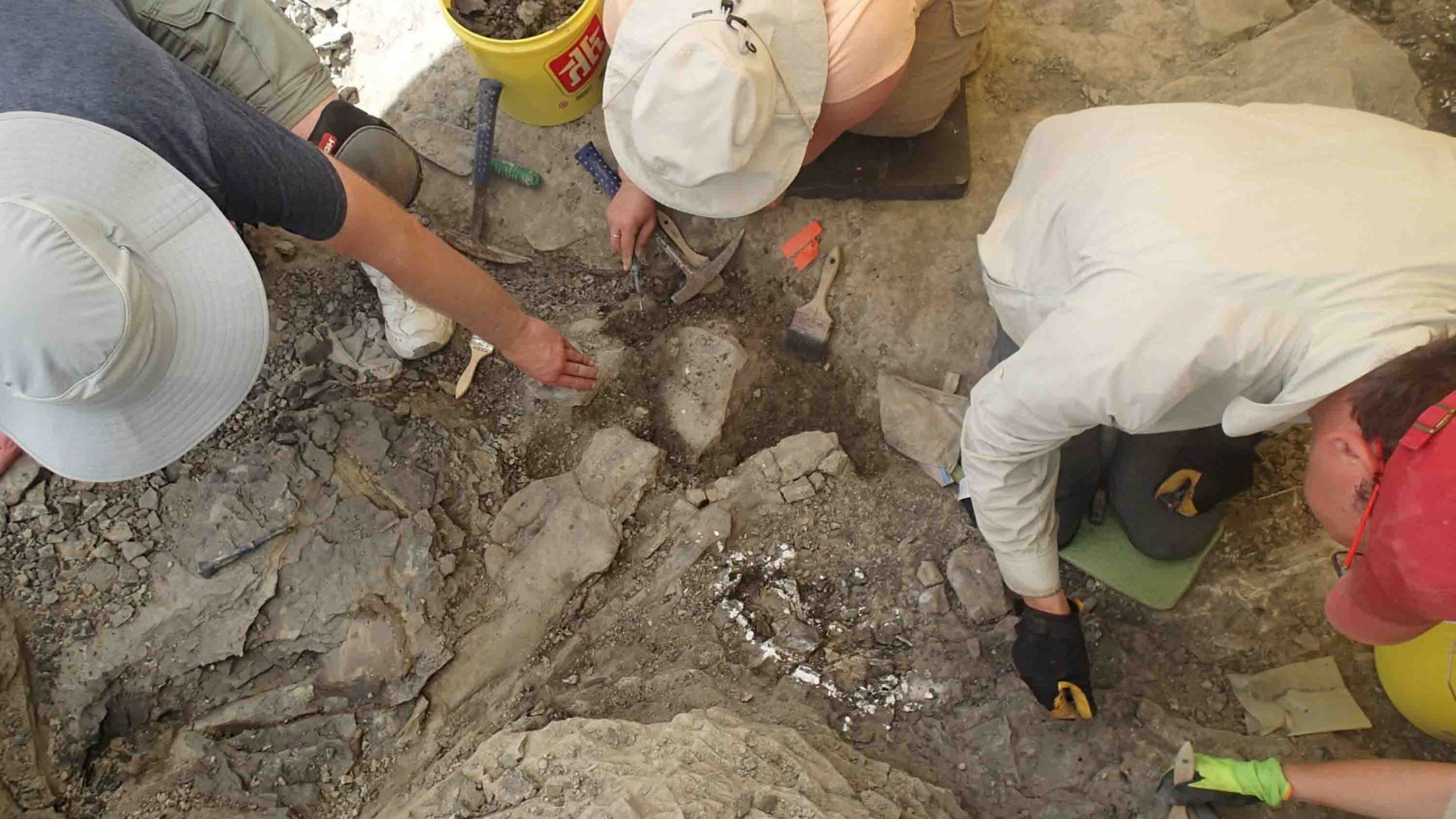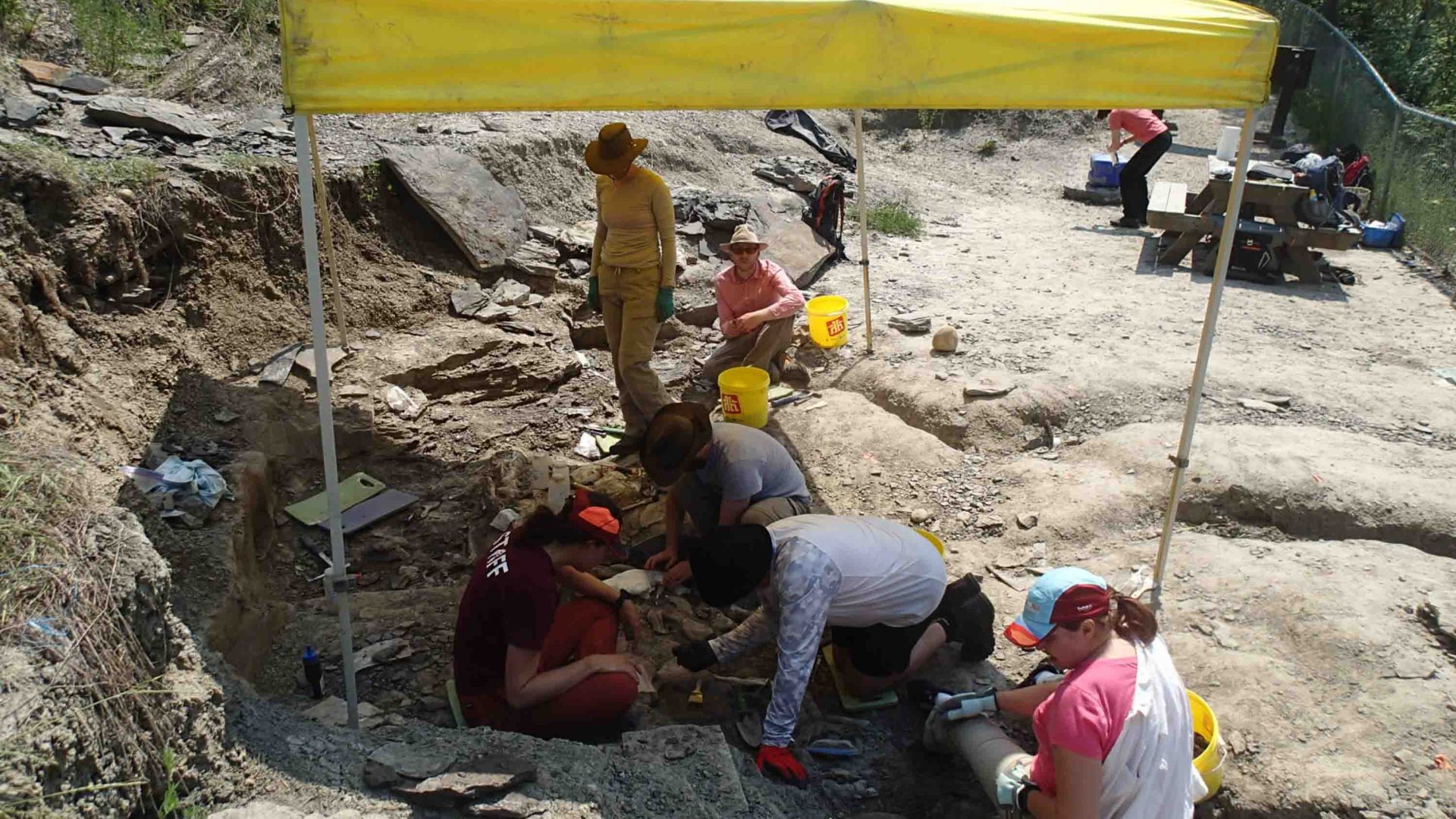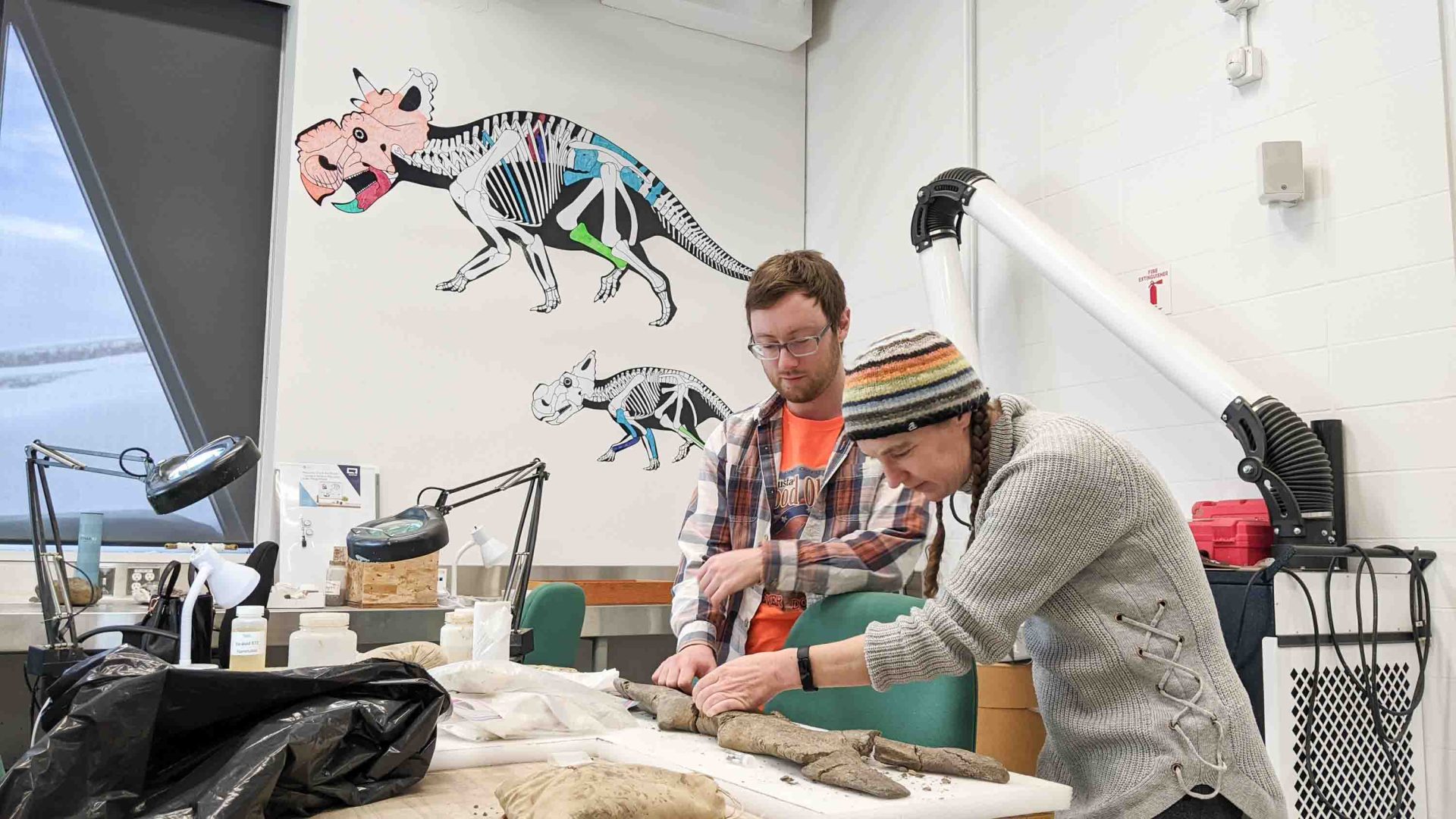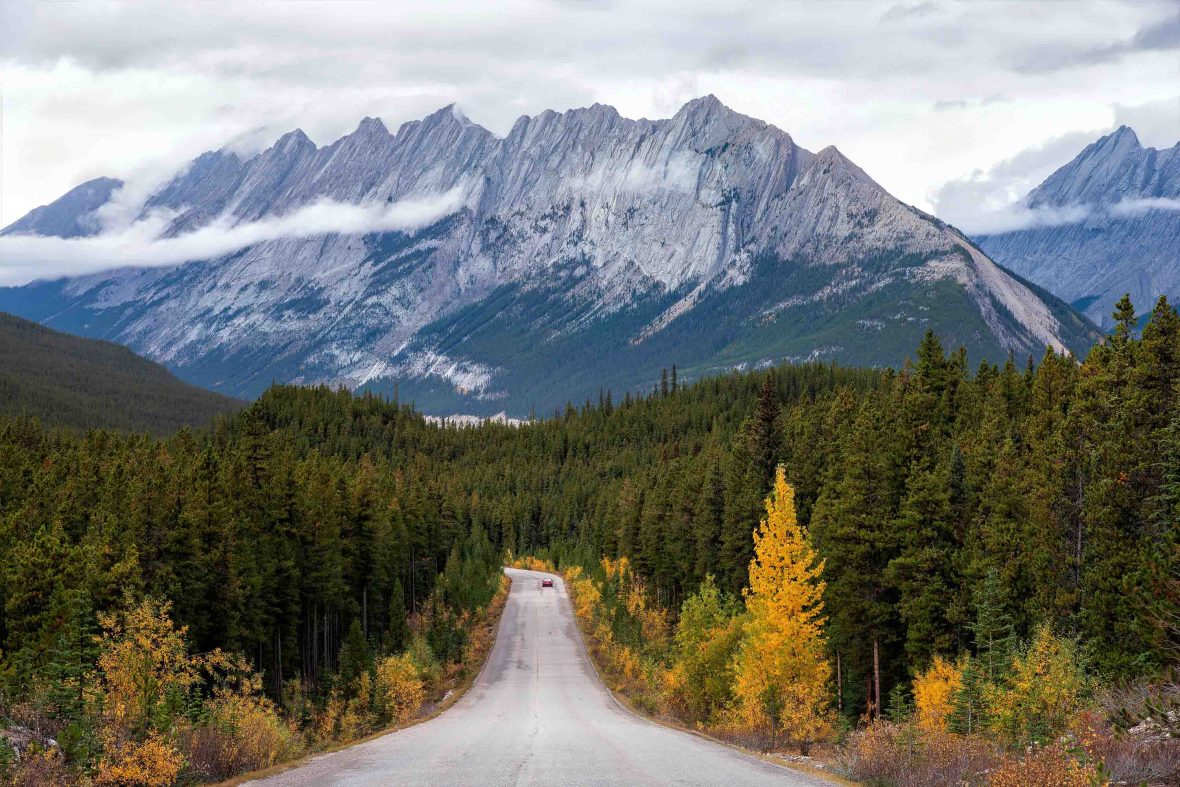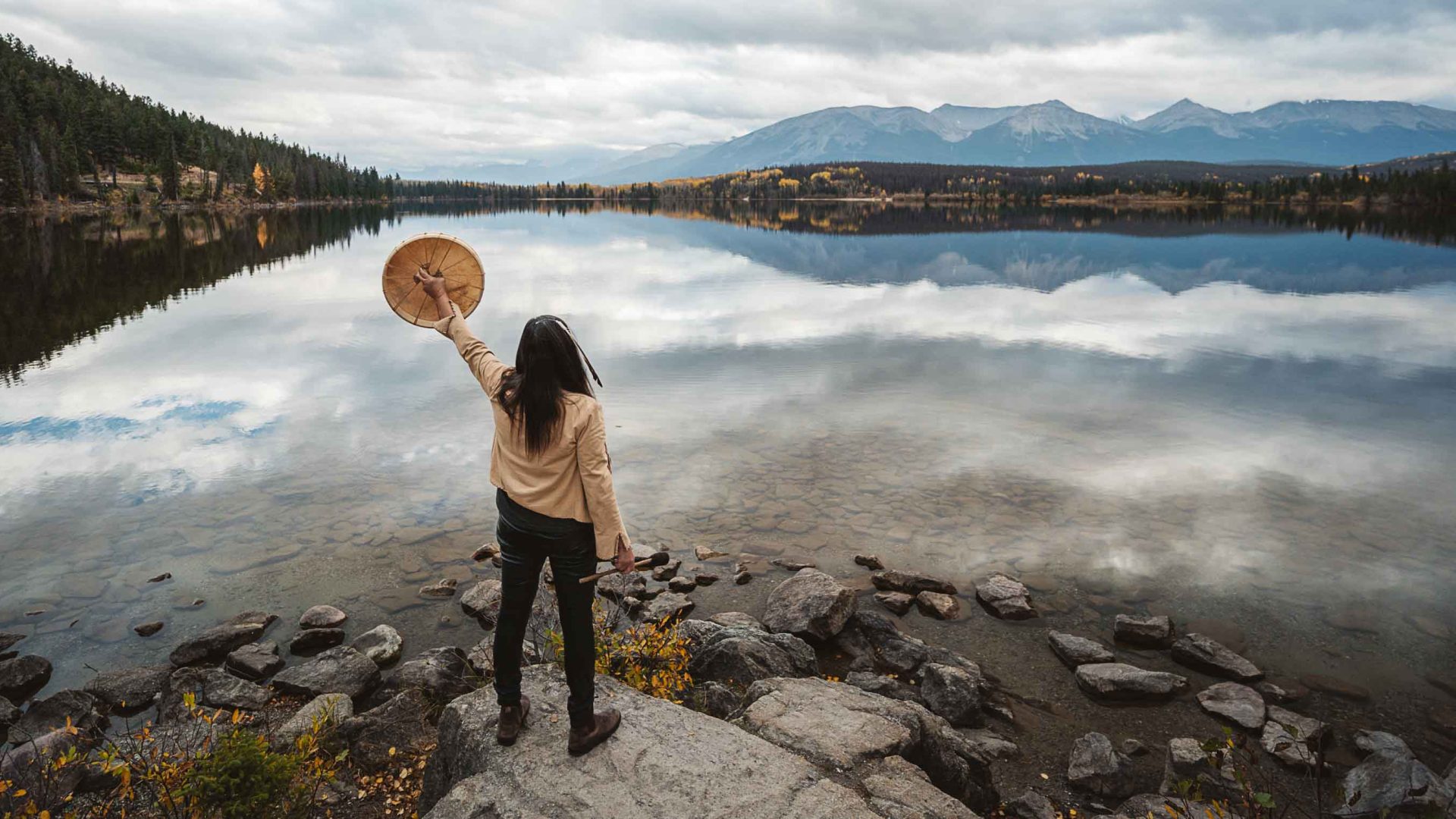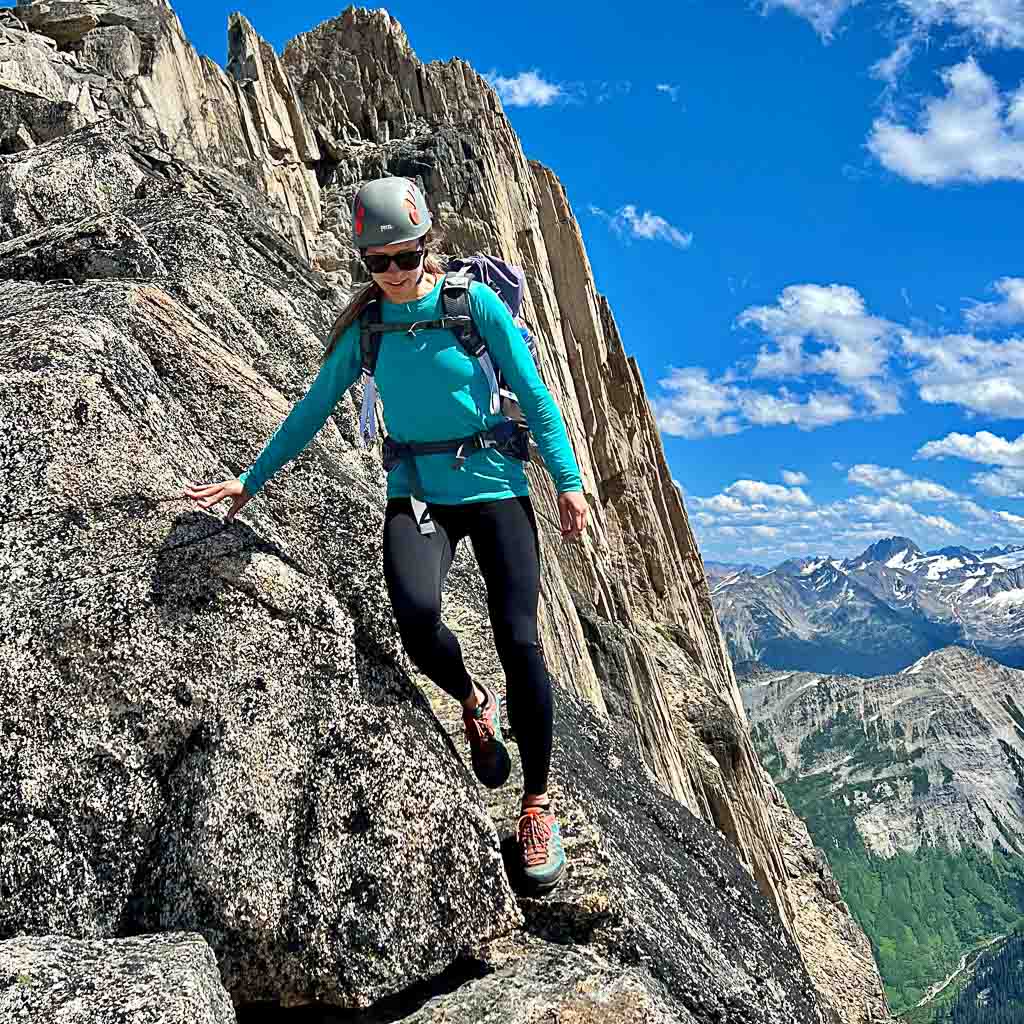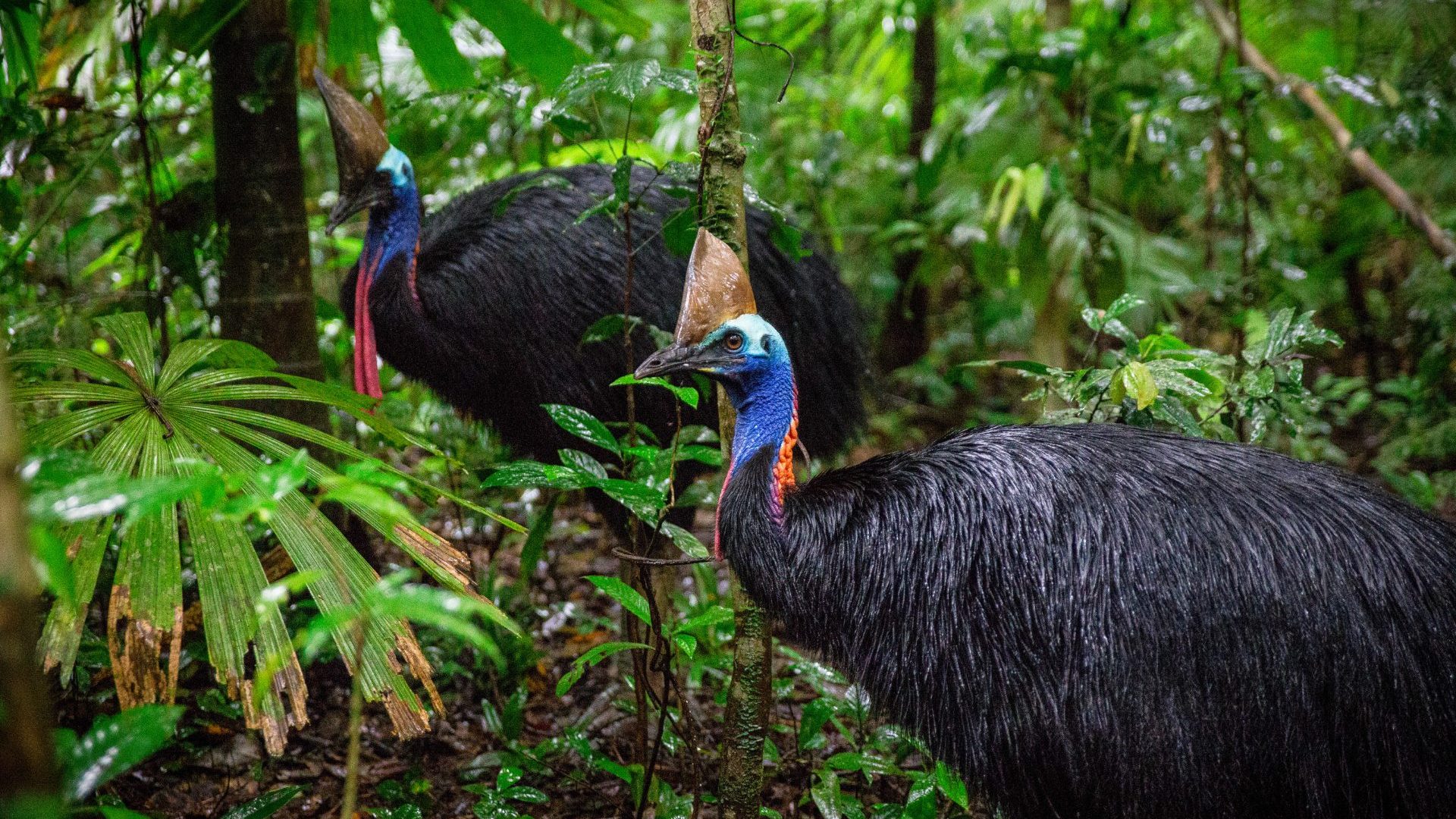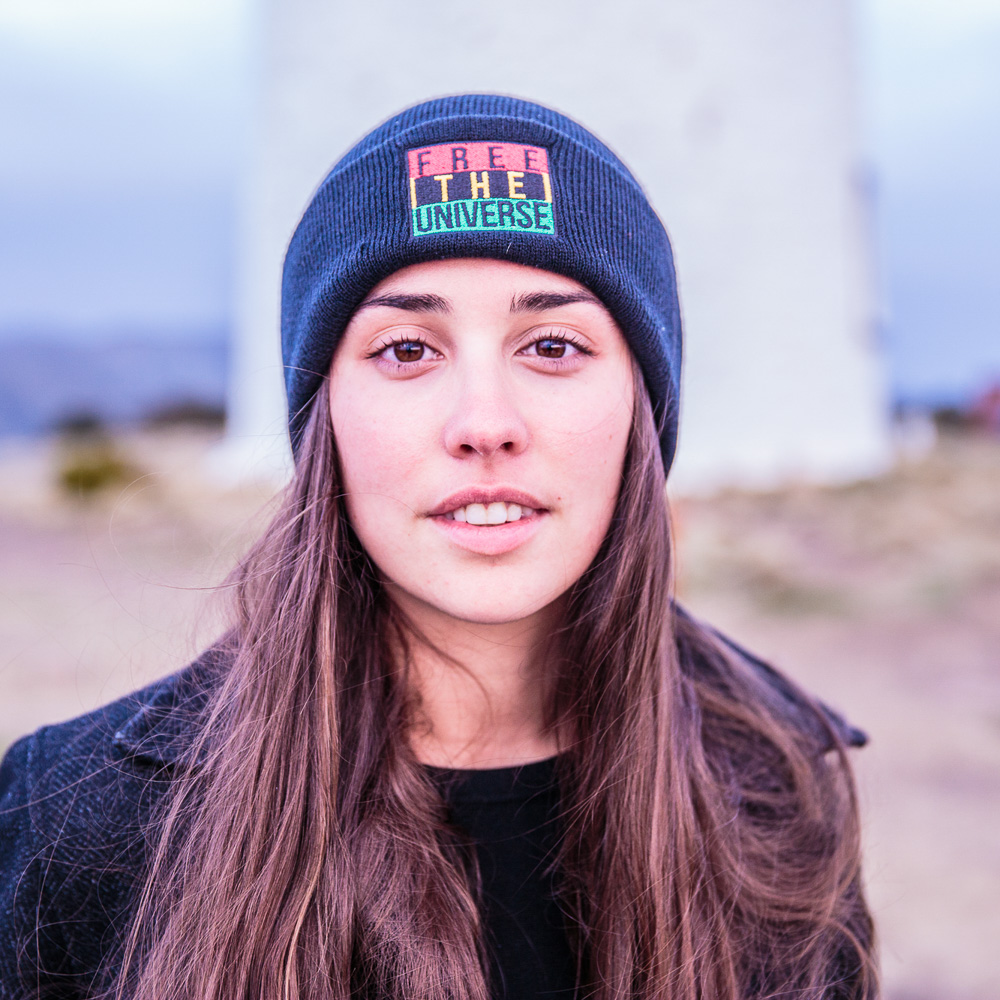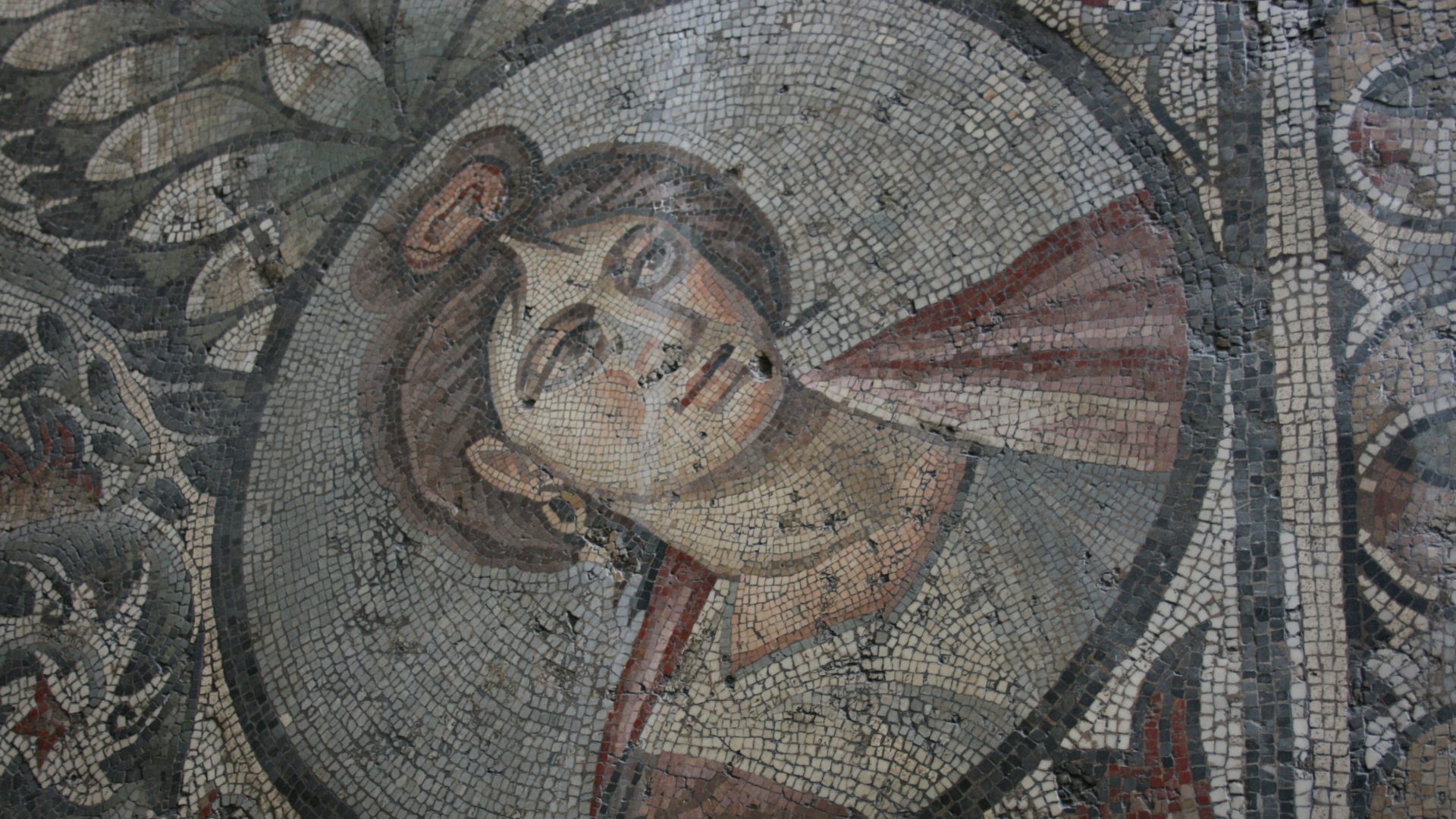In the vast Dinosaur Hall, which houses more than 30 mounted dinosaur skeletons, I spot the Albertasaurus as well as Pachyrhinosaurus, a herbivorous species that features in episode five, ‘The Journey North’ of Walking with Dinosaurs. That particular Pachyrhinosaurus, along with many other fossils in the Royal Tyrrell Museum, was unearthed further northwest in Alberta, at a site called the Pipestone Creek Bonebed. It’s known for having one of the greatest concentrations of dinosaur fossils anywhere in the world—roughly 100 to 300 bones per square meter.
To see this fossil goldmine for myself, I catch a short flight from Calgary to the northern Alberta city of Grande Prairie, then take a cab to the Philip J. Currie Dinosaur Museum in Wembley, about 13 miles (21 kilometers) due west. Though much smaller than the Royal Tyrrell Museum, the Currie Museum is filled with equally impressive specimens, many of them discovered at the Pipestone Creek site, which it administers.
Experts believe some sort of catastrophic event, probably a flood, at Pipestone Creek wiped out an enormous Pachyrhinosaurus herd who were most likely on a seasonal migration. Later, a second flood swept up all the bones and channeled them into a big jumble—a “Pachyrhinosaurus omelet,” as Dr. Emily Bamforth, curator and paleontologist at the Currie Museum, describes it.
